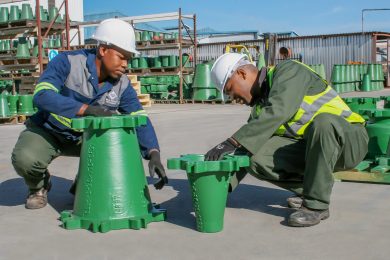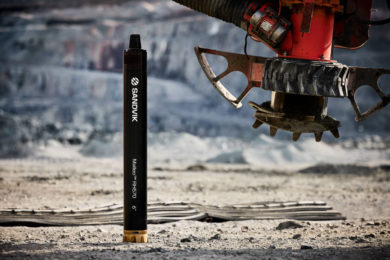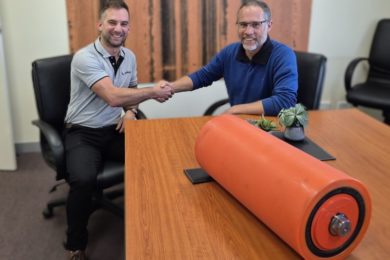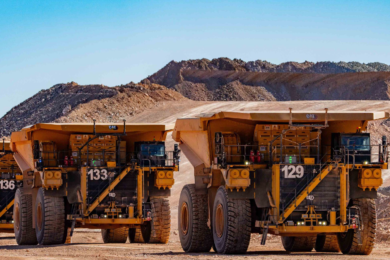Maintenance is a critical requirement for any minerals processing plant and Multotec has made it easier for mines to implement a pro-active programme on Dense Medium Separation (DMS) plants. Over recent years, it launched a number of innovations that have not only extended the life of its cast iron DMS cyclones but also simplified on-site maintenance.
This is according to Richard Haydon, Process Manager, Cyclones at Multotec Process Equipment, who points to the innovative design of the Multotec DMS cyclone Monocone with its combined spigot and cone as a prime example.
Haydon says that often the cone and spigot in conventional cyclones wear at different rates which can potentially lead to a groove being formed between the cone and spigot as well as the creation of turbulence within the cyclone with a resultant loss of process efficiency.
The Monocone design has eliminated the joint area which is found in traditional two-piece cyclones by combining the two components into one.
“The most significant advantage of the new design is that we have completely eliminated the possibility of a groove forming between the cone and spigot,” Haydon says.
The design has been subjected to extended and detailed tests at one of Multotec’s customer sites where a cyclone fitted with a Monocone has outperformed a separate cone/spigot combination.
“The wear pattern on the Monocone combination was smoother than on the conventional cyclones. In addition, the conventional cyclones showed increased wear at the breakpoint where the cone and spigot connect. The Monocone also achieved improved separation efficiency at the DMS plant due to its smoother internal profile after prolonged operation,” Haydon says.
The Monocone is complemented by Multotec’s latest CL range of cast iron cyclones, which has a self-aligning joint between the spigot and the cone. This eliminates the creation of an inward step during the assembly of cyclones on operational sites and in cramped conditions in a DMS plant.
Multotec will be phasing in the use of the self-aligning joints on other cast iron components to achieve similar benefits in other areas of the cyclone, while the vortex finder has also been redesigned for accurate fitment straight into the cyclone.
In order to improve the life of high wear components in a cast cyclone, Multotec manufactures these from alternative alloys in place of conventional high chrome cast iron.
“Components, such as a vortex finder and a cone section, can be manufactured from alternative alloys. We are now able to retrofit these customised components in a high wear area on an existing cyclone,” Haydon says.
Visual inspections on the plant are not always possible but now operational and maintenance personnel are able to use Multotec’s ultrasonic testing equipment to assess the cyclone’s condition in areas where access to the DMS cyclone is limited.
“While never being able to fully replace important visual inspections that give an accurate account of the performance of the DMS cyclone, the plant operators are now able to reduce the frequency of visual inspections and this technique can be used to strengthen existing pro-active maintenance programmes,” Haydon says.
The picture shows Phillip Nxumalo and Tumi Segakweng, Multotec operations staff, with the new self-aligning cone and spigot.









